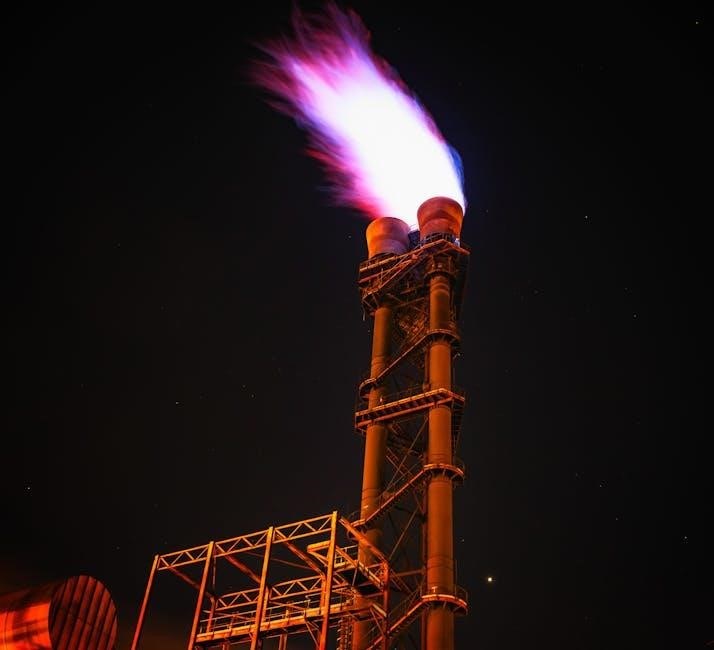and maintenance for a safe environment with proper smoke detection systems in place always ensuring safety.
Overview of Smoke Detector Installation
The overview of smoke detector installation involves understanding the basics of smoke detection systems and their importance in ensuring safety. This includes knowing the different types of smoke detectors available‚ such as photoelectric and ionization detectors‚ and their respective advantages. The installation process typically begins with a thorough assessment of the area to be protected‚ taking into account factors such as room layout‚ ceiling height‚ and potential sources of interference. A comprehensive installation guide‚ such as the smoke detector installation guide pdf‚ provides detailed instructions and recommendations for installing smoke detectors in various settings‚ including residential and commercial properties; By following the guidelines outlined in the installation guide‚ individuals can ensure that their smoke detection system is properly installed and functioning correctly‚ providing effective protection against fire hazards. The guide also covers topics such as detector placement‚ wiring‚ and testing‚ making it an essential resource for anyone involved in smoke detector installation.

Choosing the Right Location for Smoke Detectors
Proper location is crucial for effective smoke detection‚ considering factors like room layout and airflow to ensure optimal placement and function of smoke detectors always.
Places to Avoid When Installing Smoke Detectors
When installing smoke detectors‚ there are certain areas to avoid for optimal functionality and safety. Areas near bathrooms‚ ceiling fans‚ windows‚ and sliding glass doors should be avoided as they can create false alarms or reduce the detector’s effectiveness. Additionally‚ areas near cooking appliances should also be avoided as the smoke and heat from cooking can trigger false alarms. It is also important to consider the air flow and ventilation in the area‚ as smoke detectors should be placed in areas where smoke is likely to accumulate. By avoiding these areas‚ homeowners can ensure their smoke detectors are installed in the most effective locations‚ providing optimal protection and safety. Proper installation and placement of smoke detectors are crucial for ensuring the safety of occupants in the event of a fire‚ and following these guidelines can help achieve this goal‚ always ensuring safety and security.

Understanding the Components of a Smoke Detector
Smoke detectors have various components including sensors and alarms to detect and alert of smoke presence always quickly and accurately.
The Parts of a Smoke Alarm and Their Functions
The parts of a smoke alarm include a sensor‚ alarm horn‚ and circuit board‚ each playing a crucial role in detecting smoke and alerting occupants of potential danger.
The sensor is responsible for detecting smoke particles in the air‚ while the alarm horn produces a loud sound to alert people in the surrounding area.
The circuit board connects the various components of the smoke alarm‚ including the sensor‚ alarm horn‚ and power source‚ allowing them to function together seamlessly.
Understanding the functions of each part is essential for proper installation and maintenance of smoke alarms‚ ensuring they operate effectively in the event of a fire.
Additionally‚ some smoke alarms may include features such as a hush button‚ test button‚ and low battery indicator‚ which provide added convenience and functionality.
Overall‚ the various parts of a smoke alarm work together to provide a reliable and effective warning system in the event of a fire‚ helping to protect people and property.

Installation Instructions for Smoke Detectors
Follow the manufacturer’s instructions for installing smoke detectors‚ typically involving mounting and wiring the device to a junction box or existing wiring system always.
Step-by-Step Guide to Installing a Smoke Detector
A step-by-step guide to installing a smoke detector involves several key steps‚ starting with choosing the right location for the device‚ typically on a ceiling or wall.
The next step is to turn off the power to the circuit at the main electrical panel‚ ensuring safety during the installation process.
Then‚ mount the smoke detector base to the junction box or ceiling‚ following the manufacturer’s instructions for the specific model.
After mounting‚ connect the wires to the smoke detector‚ making sure to match the colors and follow the wiring diagram provided.
Finally‚ turn the power back on and test the smoke detector to ensure it is working properly‚ following the manufacturer’s instructions for testing and maintenance.
This guide provides a general overview of the installation process‚ and it is essential to consult the specific manufacturer’s instructions for the particular smoke detector model being installed.
The installation process may vary depending on the type of smoke detector and the specific electrical system in the building.
It is crucial to follow the manufacturer’s instructions and take necessary safety precautions during the installation process to ensure a safe and effective smoke detection system.

Maintenance and Testing of Smoke Detectors
Regular testing and maintenance of smoke detectors ensure they function correctly always.
Importance of Regular Maintenance and Testing
Regular maintenance and testing of smoke detectors are crucial for ensuring they function correctly and provide early warning in the event of a fire. The importance of regular maintenance and testing cannot be overstated‚ as it helps to identify any potential issues with the smoke detectors before they become major problems. This includes checking the batteries‚ cleaning the detectors‚ and testing the alarm to ensure it is working properly. By performing these tasks‚ individuals can help to prevent false alarms and ensure that the smoke detectors are able to detect smoke and alert occupants in the event of a fire. Additionally‚ regular maintenance and testing can help to extend the lifespan of the smoke detectors and ensure they continue to function properly over time. Overall‚ regular maintenance and testing are essential for ensuring the effectiveness of smoke detectors and keeping people safe;



